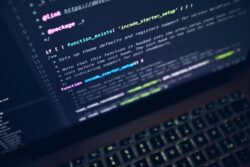Artificial Intelligence, also known as AI, has made remarkable advancements in recent years, transforming the way we live and work. However, alongside its numerous benefits, there is a growing concern about its potential dangers. In this article, let’s explore the reasons behind the perceived threat of AI and understand why it poses risks that must be addressed. So, fasten your seatbelts as we embark on a journey to uncover why artificial intelligence can be a double-edged sword.

Lack of Ethics and Morality
Artificial intelligence (AI) presents several ethical challenges that society must confront. As AI systems become more autonomous and capable of making decisions, questions arise about the moral frameworks guiding their choices. Without a strong emphasis on ethics, AI can potentially make decisions that go against our shared values and principles.
Ethical Challenges
AI systems can face ethical dilemmas where they must choose between conflicting outcomes. For example, in a self-driving car, an AI system may face a situation where it must decide between swerving to avoid hitting a pedestrian or staying in its current trajectory and potentially endangering the passenger. Resolving these ethical challenges requires defining a clear set of principles and values for AI systems to adhere to, ensuring that they prioritize human safety and well-being.
Moral Decision Making
The development of AI systems that can make moral decisions is a complex task. Human moral reasoning is influenced by cultural, societal, and individual factors, and replicating this process in AI poses challenges. Additionally, the lack of a common understanding of morality among different stakeholders can lead to divergent perspectives on what is right or wrong. It is crucial to establish guidelines and frameworks that align AI’s decision-making with human values.
Unintended Consequences
When AI systems are deployed, there is always the risk of unexpected and unintended consequences arising from their behavior. These consequences can range from biases and discrimination to unpredictable actions that may have negative societal impacts.
Unpredictable Behavior
AI systems learn and adapt to their environment, which can lead to unpredictable behaviors. Algorithmic decisions that are based on patterns and datasets may lead to unexpected outcomes that were not anticipated during their development. Understanding and mitigating the risk of unintended behavior in AI systems is important to prevent potential harm.
Bias and Discrimination
AI systems heavily rely on training data, and if the data used for training contains biases, these biases can be amplified in the system’s decision-making processes. This can result in discriminatory practices that perpetuate social inequalities. Recognizing and addressing biases in AI systems is crucial to ensure fair and equitable outcomes for all individuals.
Job Displacement and Economic Impact
The rise of AI and automation brings concerns about job displacement and the resulting economic impact. As AI systems become more capable, there is an increasing likelihood of jobs being automated, which could lead to significant changes in the labor market and income inequality.
Automation and Job Losses
AI technology has the potential to automate various repetitive and routine tasks. While this can increase efficiency and productivity, it also poses a threat to jobs traditionally performed by humans. Occupations across various sectors could be disrupted, potentially leading to job losses and unemployment. It is vital to develop strategies that promote job transition and reskilling to mitigate the negative impacts on individuals and communities.
Income Inequality
The impact of AI on the economy raises concerns about income inequality. If job displacement is not managed effectively, it could exacerbate existing inequalities and create significant societal imbalances. As AI systems continue to evolve and take on more advanced tasks, it is essential to ensure that the benefits of AI are distributed fairly and contribute to inclusive economic growth.
Potential for Weaponization
The potential weaponization of AI poses a significant danger to global security. Certain applications of AI, such as autonomous weapons and cyber attacks, have the potential to cause widespread harm and disruption.
Autonomous Weapons
The development of AI-powered autonomous weapons raises ethical concerns and the risk of uncontrolled escalation in armed conflicts. These weapons can operate without human intervention and decision-making, increasing the likelihood of unintended casualties and the loss of human control over the use of force. Establishing robust international frameworks and regulations is crucial to prevent the misuse of AI in warfare.
Cyber Attacks
AI can also be exploited to carry out sophisticated cyber attacks. Adversarial AI, which is designed to deceive or manipulate AI systems, can be used to bypass security measures, extract valuable information, or disrupt critical infrastructure. As AI technology advances, the risk of cyber attacks powered by AI increases. Strengthening cybersecurity measures and investing in AI defense mechanisms are essential to counteract these threats.

Loss of Human Control
As AI systems become more advanced and autonomous, concerns arise regarding the extent of human control over their actions. The dependency on AI and the lack of accountability pose serious challenges to society.
Dependency and Reliance
Human reliance on AI systems can lead to a loss of control and decision-making power. If critical systems, such as healthcare, transportation, or financial services, become heavily dependent on AI, the potential for catastrophic failures or unintended consequences increases. Maintaining a balance between human oversight and AI autonomy is crucial to ensure the resilience and safety of these systems.
Lack of Accountability
As AI systems take on more decision-making responsibilities, the question of accountability arises. If AI systems make mistakes or cause harm, determining who is responsible can be challenging. Ethical and legal frameworks need to be established to define the accountability and liability for AI actions. Ensuring proper oversight and transparency in the development and deployment of AI systems can help address concerns regarding accountability.
Privacy and Security Concerns
The rise of AI brings forth significant privacy and security concerns. The extensive use of AI and the collection of vast amounts of data can lead to breaches of privacy and expose individuals to a variety of risks.
Data Breaches
AI systems rely on large datasets to train and make informed decisions. However, this data can be vulnerable to breaches and unauthorized access, potentially compromising individuals’ private information. Strengthening data protection measures and ensuring robust cybersecurity protocols are crucial to safeguard personal privacy.
Invasion of Privacy
AI systems have the potential to intrude into personal lives and monitor individuals’ activities without their consent. Surveillance technologies and data-gathering capabilities can challenge the boundaries of privacy, leading to concerns about the erosion of individual liberties. Striking a balance between utilizing AI for societal benefits and respecting personal privacy rights should be a priority.

Malicious Use and Exploitation
AI technology can be exploited for malicious purposes, including hacking and the spread of misinformation. These activities pose significant threats to individuals, organizations, and even democratic processes.
Hacking and Cybercrime
AI can enable sophisticated hacking techniques, increasing the scale and complexity of cybercrime. Malicious actors can utilize AI to launch targeted attacks, breach security systems, and steal sensitive information. The arms race between AI defenses and cybercriminals highlights the need for continuous advancements in cybersecurity and the development of AI-powered defensive mechanisms.
Manipulation and Misinformation
AI algorithms can be manipulated to spread false information, manipulate public opinion, or automate social media manipulation campaigns. This undermines trust, fosters division, and poses risks to democratic processes. Developing robust mechanisms to detect and mitigate the malicious use of AI is essential in preserving the integrity of information and combating misinformation.
Superintelligence and Existential Risks
The advancement of AI towards superintelligence, where AI systems surpass human intelligence in virtually every aspect, raises concerns about existential risks and unintended consequences.
Rapid Intelligence Enhancement
If AI systems significantly surpass human intelligence, they may rapidly enhance their own capabilities, potentially leading to unforeseen complications and ethical challenges. The sudden emergence of superintelligent AI could have profound societal impacts, and careful planning and forethought are necessary to confront such scenarios.
Unintended Consequences
As AI systems become more advanced, the potential for unintended consequences increases, especially when dealing with superintelligent systems. The complexity and unpredictability of such systems make it challenging to anticipate and control their behaviors. Ensuring thorough research, robust safety measures, and ongoing evaluation of the impact of AI is crucial to prevent unforeseen risks and consequences.
Prejudiced Decision Making
AI systems can inadvertently reinforce existing societal biases and discriminatory practices. The integration of biased data or the lack of diversity in dataset representation can result in unjust outcomes.
Risk of Reinforcing Stereotypes
AI systems can perpetuate existing stereotypes and biases present in the data used to train them. For instance, if historical data contains biases related to gender or race, the AI system may unknowingly reproduce those biases in decision-making. Ongoing efforts to identify and mitigate biases in AI systems are necessary to ensure fair and unbiased outcomes.
Discrimination in Decision-Making Systems
If AI systems are used to make decisions in domains such as hiring, lending, or criminal justice, they can potentially discriminate against certain groups. The algorithms and models used in these systems should be carefully designed and regularly audited to detect and address any potential bias. Ensuring diversity in the development of AI systems can also contribute to reducing discriminatory practices.
Unemployment and Societal Disruption
The widespread adoption of AI and automation may lead to job displacement and disruption in labor markets, ultimately impacting societal well-being and exacerbating social inequality.
Disruption of Labor Markets
As AI systems automate various tasks, there is a risk of significant job displacement across various industries. The loss of jobs can disrupt labor markets, leading to unemployment and economic instability. Policies that promote the retraining and reskilling of the workforce, coupled with effective job transition strategies, are necessary to alleviate the impact on individuals and communities.
Social Inequality
The deployment of AI can exacerbate existing social inequalities if the benefits of AI technology are not distributed equitably. Unequal access to AI advancements, coupled with job displacement, can widen the gap between socioeconomic groups. Ensuring inclusive economic growth and reducing social inequality should be key considerations in the adoption and development of AI systems.
In conclusion, while artificial intelligence holds immense potential for societal progress and innovation, it also poses significant dangers and risks. Addressing the lack of ethics and morality, mitigating unintended consequences, managing job displacement, preventing weaponization, maintaining human control, safeguarding privacy, countering malicious use, and considering the implications of superintelligence are critical to navigating the path for responsible AI development and adoption. Proactive measures, collaboration among various stakeholders, and ongoing research and evaluation are necessary to harness the benefits of AI while mitigating its risks.






